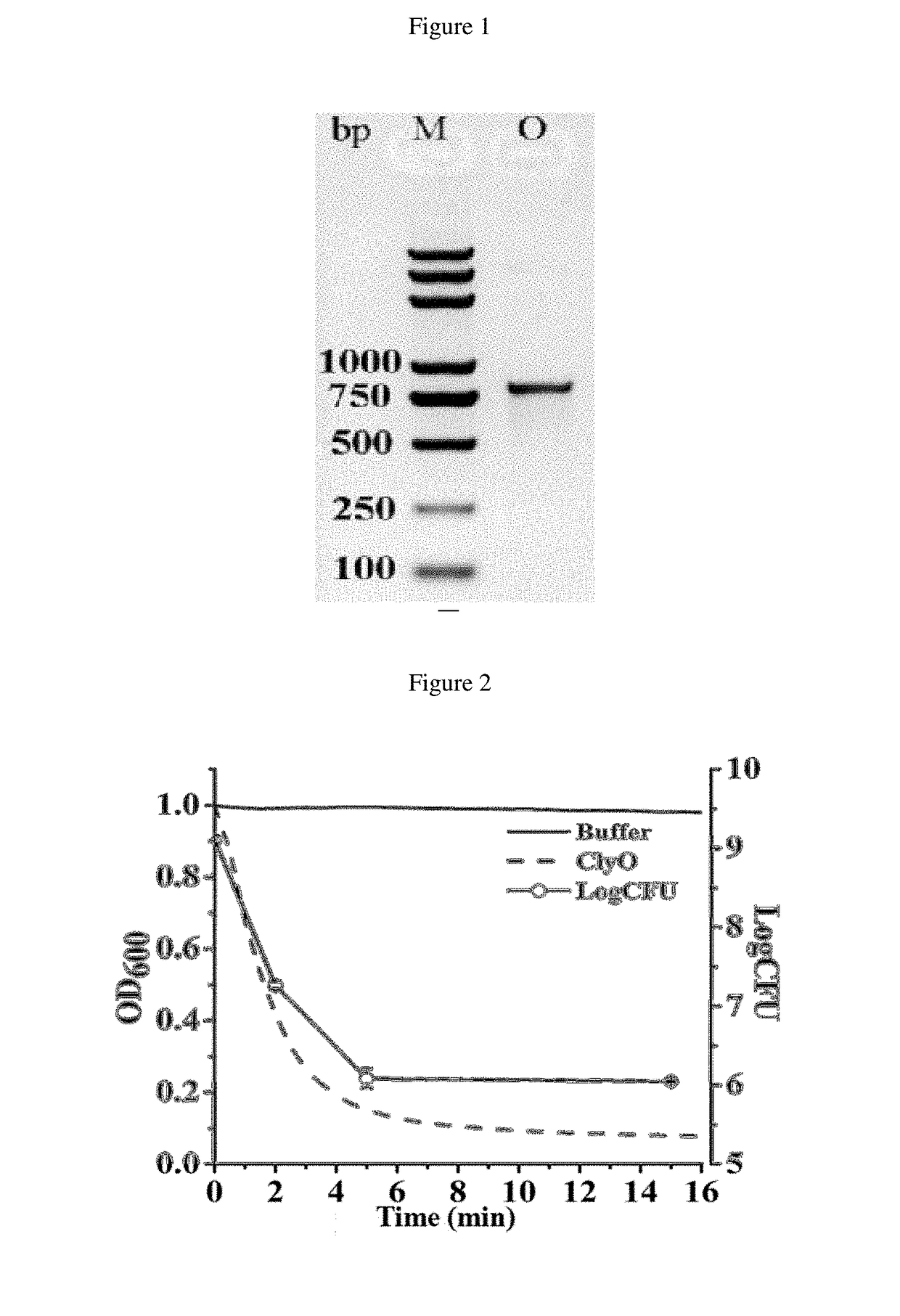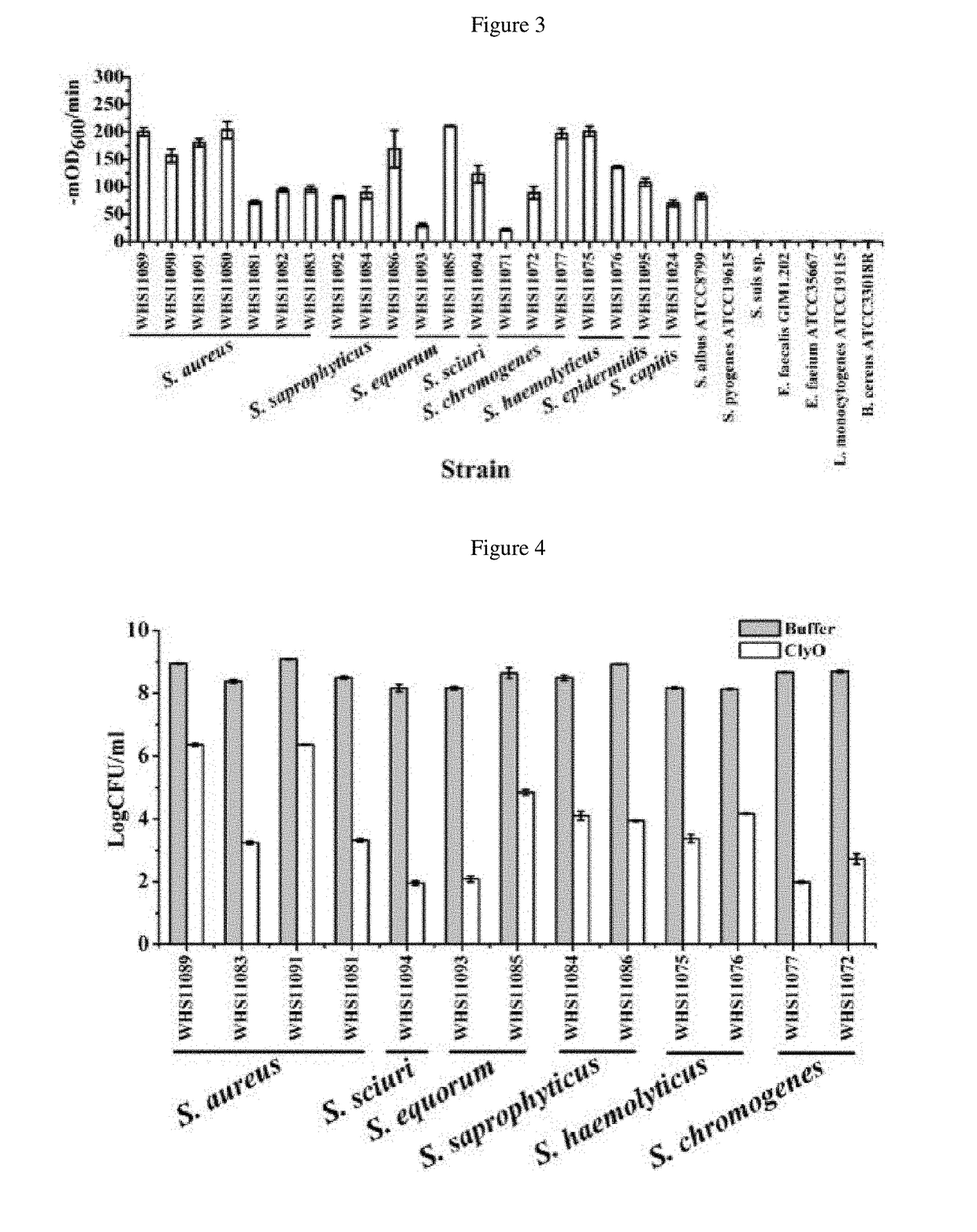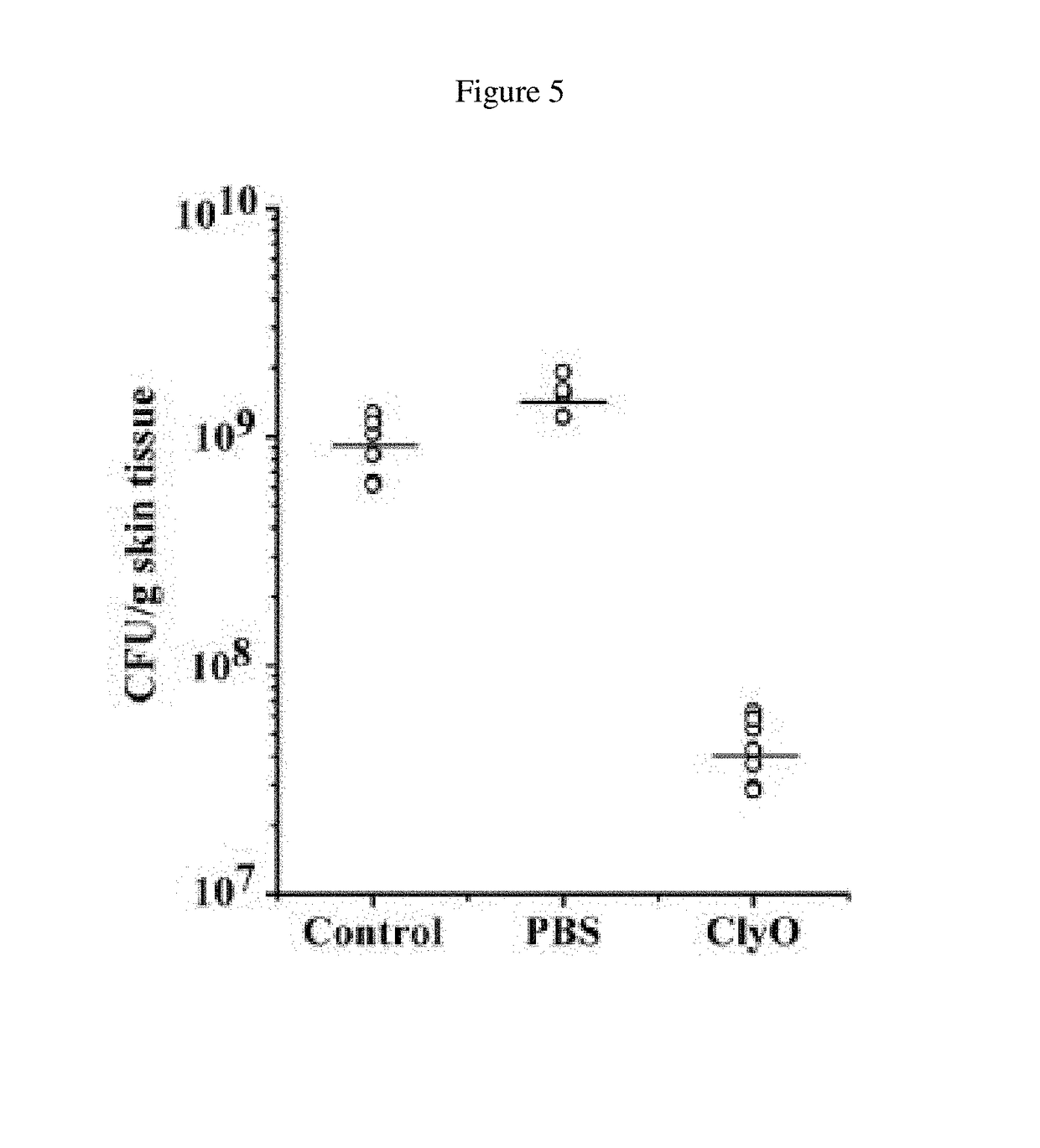Staphylococcus Lysin and Use Thereof
a staphylococcus and lysine technology, applied in the field of biological agents, can solve the problems of difficult to become resistant to host bacteria, difficult to identify and kill specific species of bacteria, and high cost of lysostaphin that has good lytic activity against staphylococcal cell wall, etc., and achieves no cytotoxicity, increased survival rate of mice, and higher cytotoxicity
- Summary
- Abstract
- Description
- Claims
- Application Information
AI Technical Summary
Benefits of technology
Problems solved by technology
Method used
Image
Examples
example 1
Construction of the Lysin being Able to Kill Staphylococcus
[0028]1) DNA sequences of ClyO gene expressing lysin ClyO was totally synthesised by Sangon Biotech (Shanghai) Co., Ltd. The synthesised sequences was inserted into plasmid pUC57. The ClyO gene was used as a template, and restriction enzyme sites NcoI and XhoI were introduced at two terminals of the target gene. Primers were designed as below:
Forward primer:(SEQ.ID.NO. 3)5-TTAACCATGGGCATGGCACTGCCTAAAACG-3 NcoIReverse primer:(SEQ.ID.NO. 4)5-ATATCTCGAGTTTAAATGTACCCCAAGC-3 XhoI
[0029]2 μl of gene was used as a template, then 1 μg of each primer was added for PCR amplification, and the programme of PCR amplification was described as below:[0030]1) 94° C., 5 min;[0031]2) 94° C., 30 sec, 62° C., 45 sec, 72° C., 45 sec, 30 cycles;[0032]3) 72° C., 10 min.
[0033]PCR products were electrophoresed and recovered, electrophoretic pattern was shown in FIG. 1. The size of ClyO gene was 777 bp, which was consistent with the size ...
example 2
Verification of the Effect of ClyO on Killing Standard S. aureus Strain CCTCC AB91118
[0038]S. aureus was cultured overnight and collected by centrifugation, and then washed with PBS once, re-suspended in PBS. A quantity of ClyO was mixed with the above bacteria, at the same time, the change of absorbance at 600 nm was monitored by a microplate reader. The mixtures of buffer and S. aureus bacteria were used as a negative control. The final lysis curve was obtained as shown in FIG. 2. At the same time, the number of viable bacteria treated at different time was counted on plates after serial dilution. This result showed that CCTCC AB91118 strain was rapidly lysed by ClyO, as a result, turbidity of bacteria suspension dropped, which was shown as the absorbance at 600 nm was rapidly declined.
example 3
Verification of the Specificity of ClyO against Various Staphylococci In Vitro and Other Different Type of Bacteria
[0039]To verify the lytic spectrum of ClyO, several non-Staphylococcus strains stored in the lab of the inventors and clinical isolates including S. aureus, S. epidermidis, S. saprophyticus, S. equorum, S. sciuri, S. haemolyticus, S. chromogenes and some other strains were selected and tested. Firstly, every testing strain was cultured overnight, and then collected by centrifugation, and washed with PBS once, then re-suspended in PBS. A quantity of ClyO was mixed with the above bacteria; at the same time, the change of absorbance at 600 nm was monitored for 30 min by a microplate reader. The declining rate of OD600 was used to indicate the lytic effect of ClyO against different strains. The mixtures of buffer and bacteria suspensions were used as a negative control. The killing effect obtained from the experiment was shown in FIG. 3. This result showed that ClyO was abl...
PUM
| Property | Measurement | Unit |
|---|---|---|
| Temperature | aaaaa | aaaaa |
| Time | aaaaa | aaaaa |
| Time | aaaaa | aaaaa |
Abstract
Description
Claims
Application Information
 Login to View More
Login to View More - R&D
- Intellectual Property
- Life Sciences
- Materials
- Tech Scout
- Unparalleled Data Quality
- Higher Quality Content
- 60% Fewer Hallucinations
Browse by: Latest US Patents, China's latest patents, Technical Efficacy Thesaurus, Application Domain, Technology Topic, Popular Technical Reports.
© 2025 PatSnap. All rights reserved.Legal|Privacy policy|Modern Slavery Act Transparency Statement|Sitemap|About US| Contact US: help@patsnap.com



